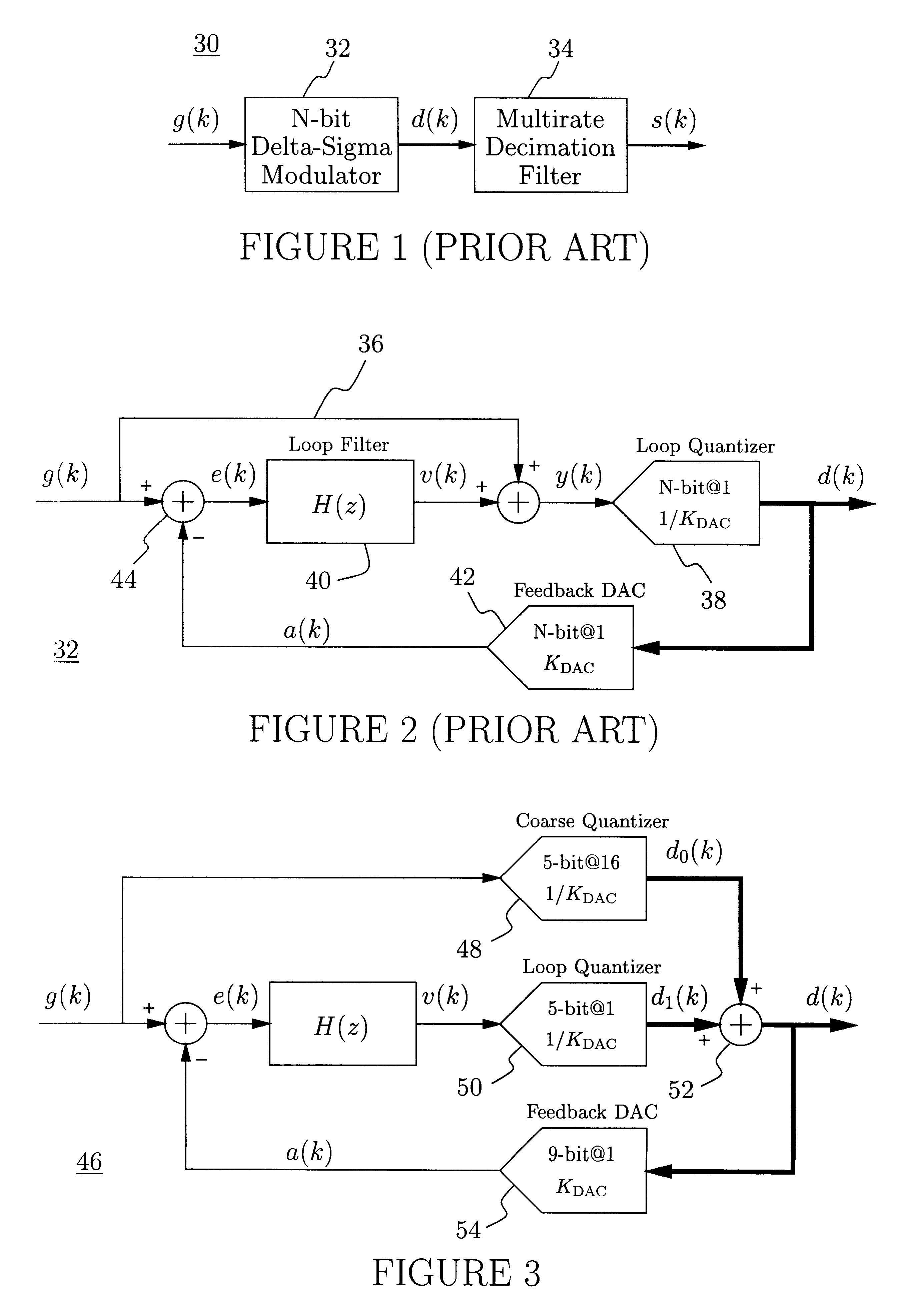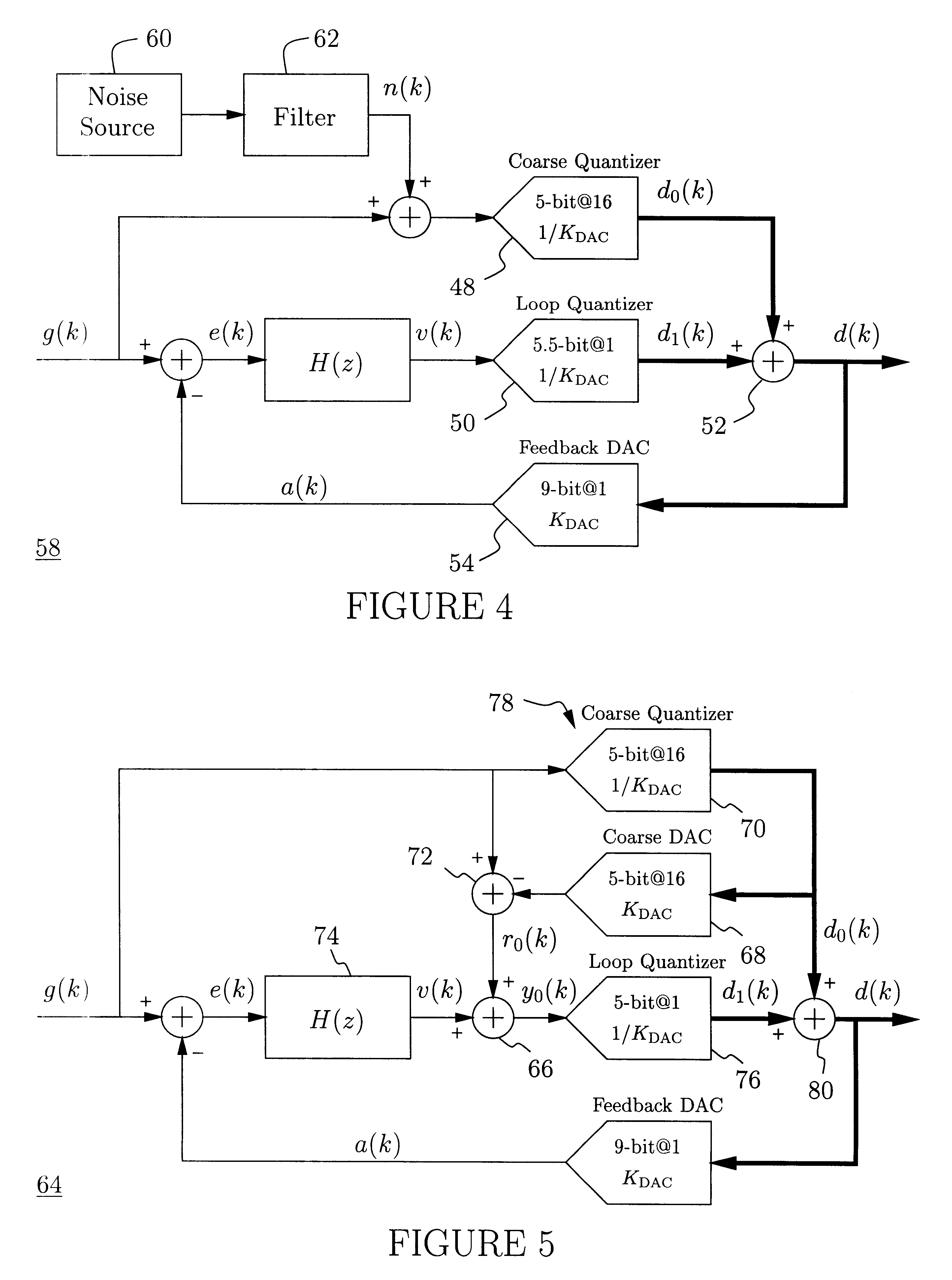Delta-sigma A/D converter
a converter and delta-sigma technology, applied in analogue/digital conversion, transmission systems, instruments, etc., can solve the problems of pipelined quantizers, inability to implement loop quantizers, and inability to achieve the maximum sampling frequency
- Summary
- Abstract
- Description
- Claims
- Application Information
AI Technical Summary
Benefits of technology
Problems solved by technology
Method used
Image
Examples
fourth embodiment
Although the modulator [46] shown in FIG. 3 per se is very useful for moderate-to-highly oversampled applications, it is generally preferable to avoid the distortion in d.sub.0 (k), e.g., by dithering the coarse quantizer [48]. This simple technique can be implemented as shown in FIG. 4. A noise signal n(k) is added to g(k), and the sum is quantized by the coarse quantizer [48]. The noise signal's n(k) magnitude should be approximately as large as the coarse quantizer's [48] LSB, i.e., 16.multidot.K.sub.DAC, and the loop quantizer's [50] resolving range must be increased accordingly. It is preferable if n(k) has only little power in the signal band. The desired spectral composition of n(k) can be obtained using a broadband noise source [60] followed by a filter [62] suppressing the undesired (signal-band) spectral components. The noise source [60] and the filter [62] can, for example, be implemented as a digital noise-shaping loop and a simple DAC (not shown). A better technique is ...
third embodiment
FIG. 26 shows the main delta-sigma modulator [234]. It comprises a third-order loop filter [270] of the same type [198] as shown in FIG. 23 and discussed above. The feedback delays, T.sub.d3, T.sub.d2, T.sub.d1, T.sub.d0, and the feedback coefficients, b.sub.3, b.sub.2, b.sub.1, b.sub.0, are the same as used for the third embodiment [196] discussed above.
The two least critical feedback signals are generated using an analog feedback circuit [272] similar to that [260] used for the coarse delta-sigma quantizer [228]. Clearly, the feedback coefficients, b.sub.3, b.sub.2, b.sub.1, b.sub.0, are not the same as those used for the coarse delta-sigma quantizer [228]; the loop filters are of different orders.
The two most critical feedback signals are generated by D / A converting the digital compensation signal d.sub.1 (k). The most critical DAC [274] makes use of a first-order mismatch-shaping algorithm and a deglitching output stage, whereas the second-most critical DAC [276] uses only a deg...
PUM
 Login to View More
Login to View More Abstract
Description
Claims
Application Information
 Login to View More
Login to View More - R&D
- Intellectual Property
- Life Sciences
- Materials
- Tech Scout
- Unparalleled Data Quality
- Higher Quality Content
- 60% Fewer Hallucinations
Browse by: Latest US Patents, China's latest patents, Technical Efficacy Thesaurus, Application Domain, Technology Topic, Popular Technical Reports.
© 2025 PatSnap. All rights reserved.Legal|Privacy policy|Modern Slavery Act Transparency Statement|Sitemap|About US| Contact US: help@patsnap.com



